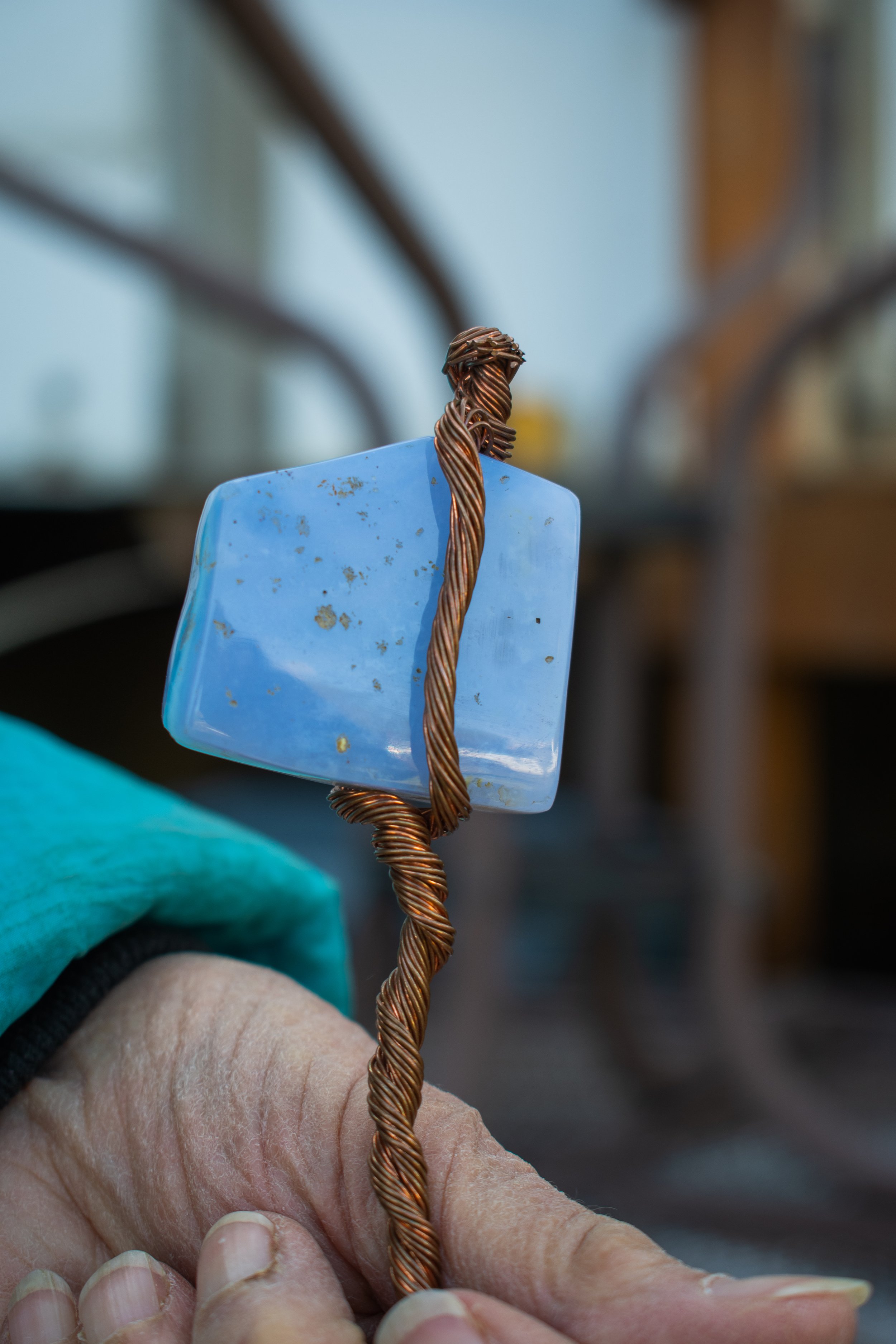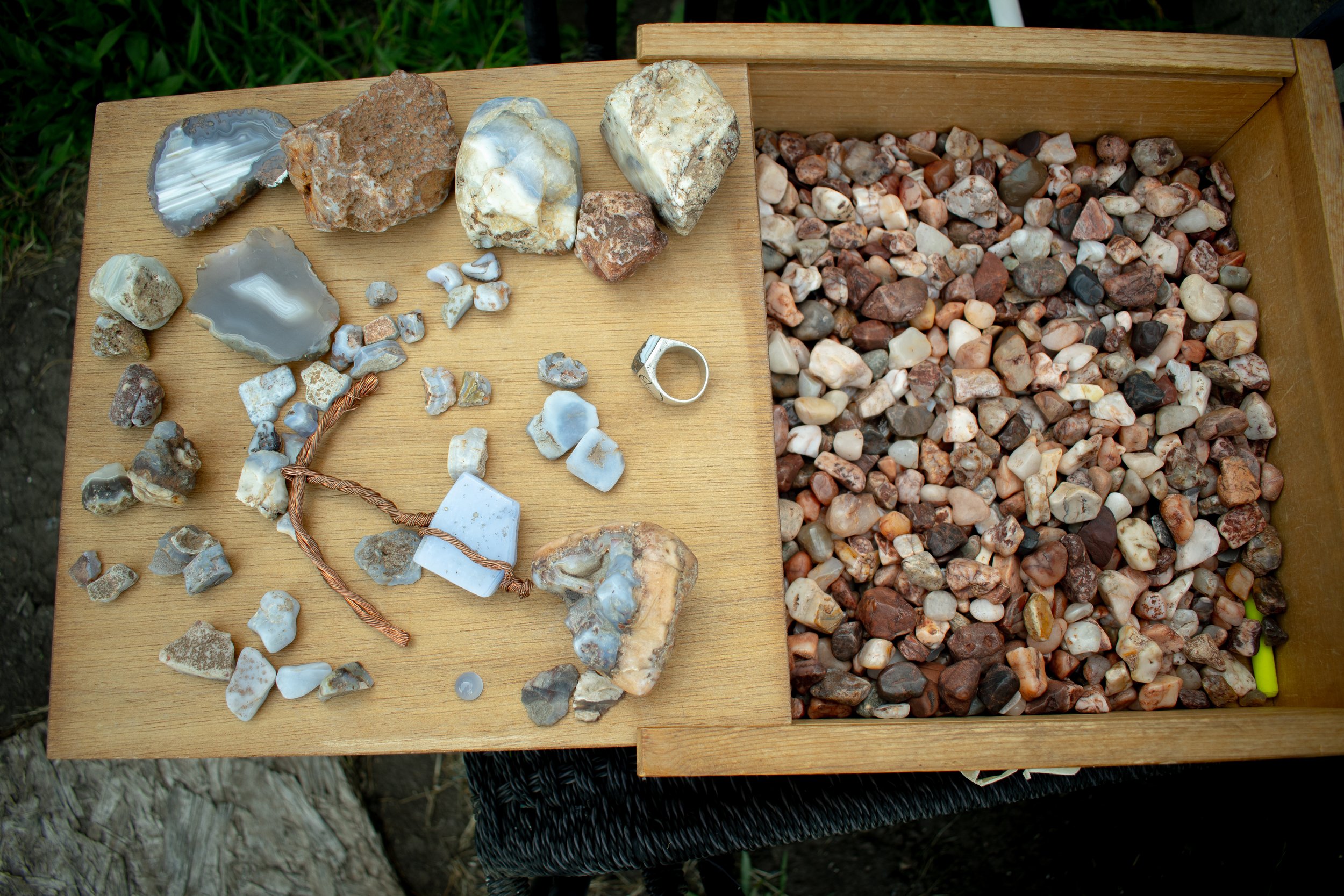Blue Agate: The Ellensburg Blues
Story by Omar Benitez | Photos by Inderjit Singh
Blue Agate is a unique agate or gemstone that is completely unique to Kittitas County. The gemstone was first discovered in 1905 by Ellensburg’s first mayor, Austin Miers, but it is believed that native American tribes have used them for arrowheads. Now blue agate is predominantly used in jewelry, but it is still a very rare and hard gemstone to find. However, it is possible to find this rare gemstone for yourself.
Where do they come from?
It is believed that blue agates were first formed long ago in the Teanaway area. They formed over millions years in the sedimentary rocks and basalts in the area.
They form after mineral dense fluid fills holes and cracks from the erosion of the rocks. Over time the rock begins to erode and form the blue gems we’ve come to know.
But if they weren’t formed in Ellensburg then how did they end up here? Well it is believed that a huge ancient river that once flowed here picked up the stones and deposited them all over the Kittitas valley.
What makes them sought after?
Since its discovery, blue agate has been sought after for use in jewelry. According to the Kittitas County Historical Museum even some of the original stones found by Austin Miers were sent to jewelers in Seattle to be put onto rings.
Ellensburg blues are chemically different from blue agates found around the world. This and the fact they are very hard to find makes them the only agate to be considered a semi-precious gem.
A lot of different factors can go into the price of a stone, from the size, weight and the color, but they can be sold for as high as $250 per karat.
Where to find them?
Ellensburg blue agates can only be found in a specific area between Ellensburg and Thorp. Since the area where blue agates are typically found is mostly an agricultural area, one of the best places to find them is the Rock n’ Tomahawk Ranch.
The ranch has been owned and operated by Bernice Best and her husband since 1994. The ranch sits on a two hundred acre property and opens its doors to customers for rock hunting.
Even for an experienced rock hunter like Best, she says it's still a one in fifty chance she finds one whenever she goes out. “People seem to think that they’re just going to come out here and find a blue agate. They’re so hard to find, and a lot of people get very disappointed because they don’t find one,” she says.
Apart from the Rock n’ Tomahawk Ranch, there is the area around Red Top lookout, Best says this area has also been a good spot for finding blue agates.
Tips for rock hunting
Early summer is the best time to go blue agate hunting since the thawing of the frozen ground pushes new stones to the surface.
Pay attention to subtle blue hints, often blue agates are hidden in plain sight since most blue agates seem like regular stones on the outside.
Be prepared to walk, make sure to bring good hiking shoes and water since it might be hot.
Be prepared for a hard search, these gemstones are very hard to find, it’s important to understand that.
Bring a shovel, you may need to do some digging to find your stone.




